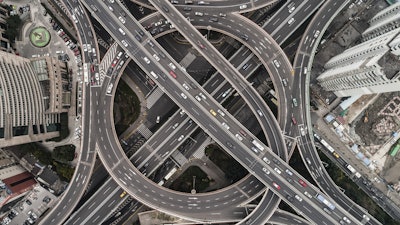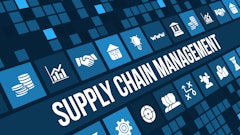
Logistics professionals have always understood the vital role of the supply chain. Now the importance of what we do is at the forefront for everyday citizens, as the world contends with the uncertainty and insecurity of a global pandemic. During these difficult times, supply chain leaders will be tasked to keep level heads, to stay agile and innovate during changing conditions of the market.
As different regions cope with lockdowns and social distancing, supply chains must keep moving to make sure that important products get from field and factory to local communities' grocery stores, pharmacies, clinics, hospitals and front doorsteps. It's a big responsibility and key to that is shoring up mechanisms for ensuring that transportation and hand-offs are conducted efficiently and safely.
In response to the Coronavirus disease (COVID-19) crisis, supply chain professionals should be keeping the following goals top of mind to execute on the mission of keeping consumers fed, healthy and safe.
Improving efficiency and utilization of supply chain resources
With panic buying emptying grocery store shelves and medical suppliers rushing to equip hospitals, many transportation organizations are running into capacity limits. As such, supply chain leaders will need to look for whatever edge they can to make their operations more efficient in the face of growing pressure in critical industries. The more they can maximize their loads, the faster they distribute goods to market.
One of the big challenges is the work-from-home policies that may cause organizations to rethink how they run their operations. Many logistics professionals have been called to understand what is going on in their transport yards with the assets coming and going without large teams of people physically present to monitor.
This means that transportation firms, factories and other supply chain players will need to institute more rigorous means of digital tracking and automation to get goods into the right position, to make it easier for drivers to find their loads and to track movement of goods from end-to-end.
This kind of visibility is crucial for financial forecasting and resource planning, especially as the market experiences wild swings in demand. No matter what, any supply chain asset that sits idle costs money, but in a pandemic, it could also cost lives. Supply chain leaders need to strive for tools and processes that help get the most accurate visibility to forecast capacity needs and fill demand wherever it is felt most acutely.
Maintaining persistence in supply chain transport
In the coming months, supply chains could be facing a high degree of variability in personnel—be it drivers, warehouse workers, yard staff and so on. Across the supply chain, many organizations will need to be prepared to staff up and fill in teams with new faces, as experienced personnel drop in and out of the roster to recuperate or care for sick family members.
With these rapid changes in personnel, it'll be up to leadership to automate and maintain consistency in how goods are moving and how all staff and partners ensure they know when cargo is leaving, when it is arriving, where they can find it, where specific loads are on the road, and so on. Persistence is always a big goal in logistics, and the current climate is going to require leaders to get creative about how they achieve it within their organizations.
Improving visibility into transport status
Information flow grows in importance as the fallout from COVID-19 applies more pressure on supply chains. Logistics leaders must find a way to ensure that customers, partners and consumers are well informed that goods are still flowing.
To keep panic from setting in at distribution centers and stores, supply chain leaders should seek to establish the kind of visibility into transport status that they can tell stakeholders exactly when the toilet paper is rolling into the loading dock. The more up-to-the-minute information we can provide, the better we can calm nerves.
Ensuring safety and security of goods
Fortunately, we haven't heard a lot of stories or statistics about logistics companies suffering from increases in theft, but it's a valid concern to address when looking at massive shifts in supply and demand. While incidents appear to be isolated, they are occurring.
For example, in one case, a North Carolina county sheriff found 18,000 pounds of toilet paper and consumer goods that were absconded within a stolen tractor trailer. As we ensure efficiency and persistence of supply chain transport, we should also be doing our best to bake in controls for the safety and security of goods as well.
Making the lives of drivers and other logistics pros easier
Finally, remember the well-being of your drivers. Truck drivers and other logistics professionals are burning candles at both ends right now. Supply chain leadership should be doing whatever they can to make the lives of these people as easy as possible.
We can start by taking away the aggravation of playing hide-and-seek with loads in the transport yard. Smart tracking and automation can help drivers save as much as 30 minutes a day by reducing the time it takes to find goods and start their routes. That not only increases efficiency, but it also reduces stress. Little things like that can really matter in a crunch time like this—it could make the difference between a driver being able to take lunch or stop for a much-needed nap.
Takeaways
COVID-19 is ratcheting up the pressure on supply chain leaders. But, veterans in this space have always been up for a challenge, and this time is no different.
By leveraging technologies that offer better visibility into where equipment and shipments are, that track the status of transport and that maximize utilization, supply chain leaders can go a great way toward helping communities maintain a sense of normalcy and calm during this global time





















